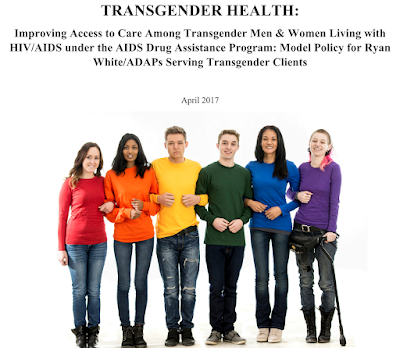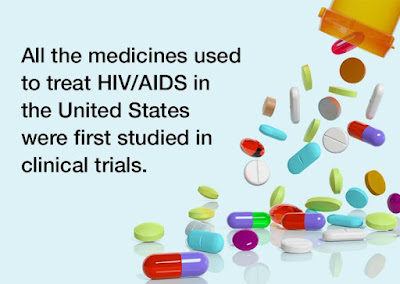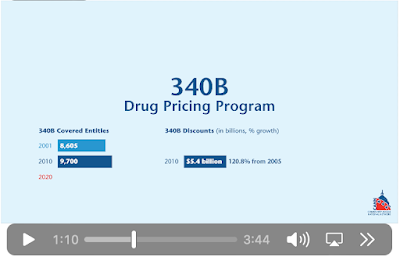By: Brandon M. Macsata, CEO, ADAP Advocacy Association & Jen Laws, President & CEO, Community Access National Network
Earlier this week, ADAP Advocacy Association and Community Access National Network (CANN) issued a joint statement announcing an embargo of each respective organization’s patient advocacy and education activities within the state of Florida. Both organizations also cited a need to protect advocates and patients from outside of the state from the very real dangers associated with traveling to the state, while also emphasizing that both organizations will continue to support local advocates in the state as they work to create positive public policy changes for Floridians living with HIV. The decision to adjoin both the ADAP Advocacy Association and the Community Access National Network to the previously issued formal travel advisory by the NAACP wasn’t taken lightly because maintaining strong ties to the community is important in generating effective advocacy. The move was not a political statement either, but rather an expression of support for basic human decency.
The announcement comes after the state’s governor, Ron DeSantis, signed into law a series of bills targeted toward harming Black, Brown, LGBTQ+, and immigrant people. The transgender community was probably singled out more viciously than any of the marginalized communities throughout this hate-inspired Florida Legislative Session. Make no mistake about it why this effort to enflame a “culture war” is an issue of organizational values and something quite personal to both of us. The non-trans guy here taking issue with the fact that the trans guy here now cannot take “a leak” without fear of being charged with a felony has nothing to do with politics and everything to do with basic human rights.
The fact is we both previously lived in the state for many years – it’s where we started our HIV policy work, even before we knew one another. It is where we met over a decade ago. Upon reflection, we still can regularly be found discussing mutual friends from Florida, those still living and those who have passed on, in different phases of their lives.
From recalling Bishop S.F. Makalani-MaHee's testimony to the Florida Legislature in 2016, against a bathroom bill (which failed that year), to his death on Transgender Day of Remembrance in 2017, part of this internal discussion was a reflection on the deep history he had with advocates serving both the Transgender and HIV communities of the state. What we’re witnessing right now in Florida is challenging for us, personally and professionally, but state-sponsored discrimination, hate, and stigma drew a line that cannot be ignored.
In 2017, Human Rights Watch published an important report, Living At Risk: Transgender Women, HIV, and Human Rights in South Florida, and the very same year ADAP Advocacy Association published it’s issue paper, Transgender Health: Improving Access to Care Among Transgender Men & Women Living with HIV/AIDS Under the AIDS Drug Assistance Program. Both of us worked on the ADAP project, and it was important for a transgender advocate (Jen) with lived experience to lead in writing model policies meant to serve Transgender People Living with HIV. The decision to issue a travel advisory in Florida for people living with HIV is rooted in disparities and areas of improvement emphasized in those two reports.
 |
| Photo Source: ADAP Advocacy Association |
Much of our hearts belong to Florida for the dedication and innovation the people of this state can and do offer, despite every unnecessary public policy challenge they face. People like Mick Sullivan and Donna Sabatino (formerly with Tibotec Therapeutics), Connie Reese and her amazing work with Simply Amazing You Are (SAYA) in Miami-Dade County, Riley Johnson promoting trans equality in accessing medical care via RAD Remedy, Michael Ruppal’s leadership with The AIDS Institute, and the late Tiffany Marrero, who served to voice the experiences of vertical transmission patients and Black Women and only recently left us. Heck, Trelvis Randolph and Maria Mejia both reside in South Florida, and they serve on CANN’s board of directors. These folks not only are colleagues, but they are friends and expressing concern over traveling to a place once call “home” saddens us.
But some things are larger than us. Recognizing the inherent roots of racism, which has prompted the NAACP to issue a travel advisory, our joint statement read, in part:
The state of Florida's moves to harm Transgender people, Black and Brown communities, and immigrant families undermines the exceptional work the state's Health Department has done in the last several years and only serves to further existing health disparities affecting these communities, particularly as it relates to HIV. For example, according to Florida's own data, while Black and Hispanic/Latino communities make up about 15.6% and 26.7% of the state's population, respectively, these same communities represent 37.7% and 39.6% of HIV diagnoses. Put another way, in Florida, while white people experience a rate of HIV diagnoses of 8.5 per 100,000 people, that rate among Black communities is 51.8 and for Hispanic/Latino communities it's 31.7.
Similarly, Florida has, in years past, made extraordinary strides in ensuring transgender people can access HIV related care, specifically by integrating best practices and guidance from the Health Resources and Services Administration (HRSA) on integrating gender affirming care into HIV care provision. Indeed, as a result of these moves, transgender women represent some of the greatest successes in linkage to care, retention in care, and viral load suppression of any demographic in the state. Recently signed bills prohibiting state contracted clinics from providing gender affirming care will have a dramatic affect in reversing these long sought after wins.
Make no mistake, we are frustrated with an apparent lack of involvement from the federal agency charged with implementing the Ryan White HIV/AIDS Program. Because Ryan White program dollars are passed through the state and then contracted with counties, local areas, or directly with a provider, and because other health initiatives of the state are also part of how providers in Florida acquire funding to provide public health services, they may be prohibited from providing gender affirming care at all - regardless of where those dollars originate (state or Federal).
It is incumbent upon HRSA to provide guidance beyond ‘allowable’ uses and inform that state it has contractual, fiduciary responsibilities associated with its grant and subrecipient contracts to ensure these dollars serve these communities. HRSA must move beyond the language of ‘allowable’ uses to ‘expected integration of best practices.’
In many situations, we have been willing and able to confront harsh environments. Indeed, we recognize the need to be present in the spaces where political forces wish to silence us. However, Florida has crossed a line in becoming hostile to the very existence of Black and Brown and Immigrant and Transgender people, those same communities most affected by HIV. The people who enacted these hateful laws were motivated by hateful politics; our response is motivated by concern for the people we’re charged with representing in our community…many of whom feel silenced. This is a line which we cannot cross and still consider ourselves as living the values we espouse.
We came to the difficult decision that neither the ADAP Advocacy Association or Community Access National Network will host any advocacy or educational event in the state of Florida. We will continue to support local advocates and people living with HIV residing in the state, including scholarship support for intrastate travel by local advocates. We will continue to offer analysis on the state's activities. But we will not ask advocates from outside of the state to risk their mental health or physical safety to travel to the state.











